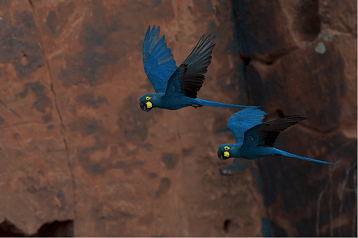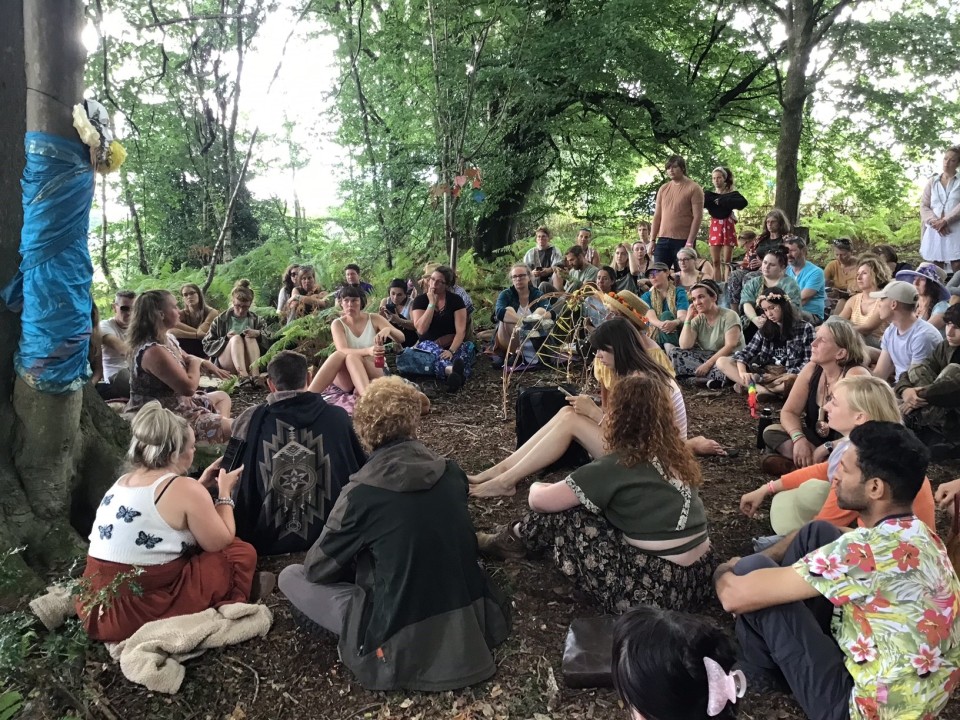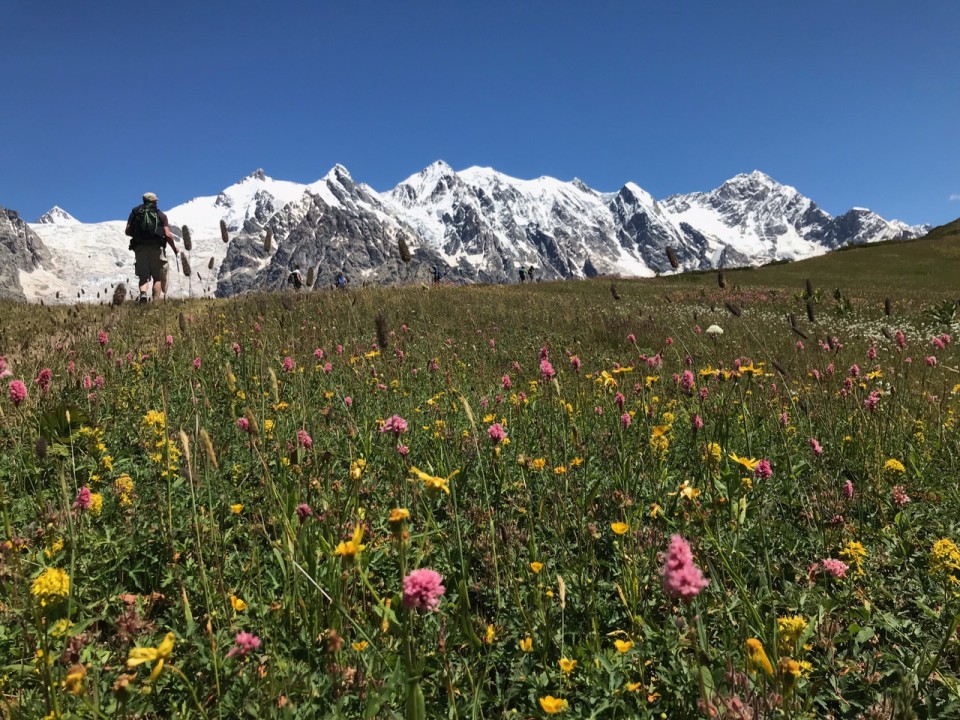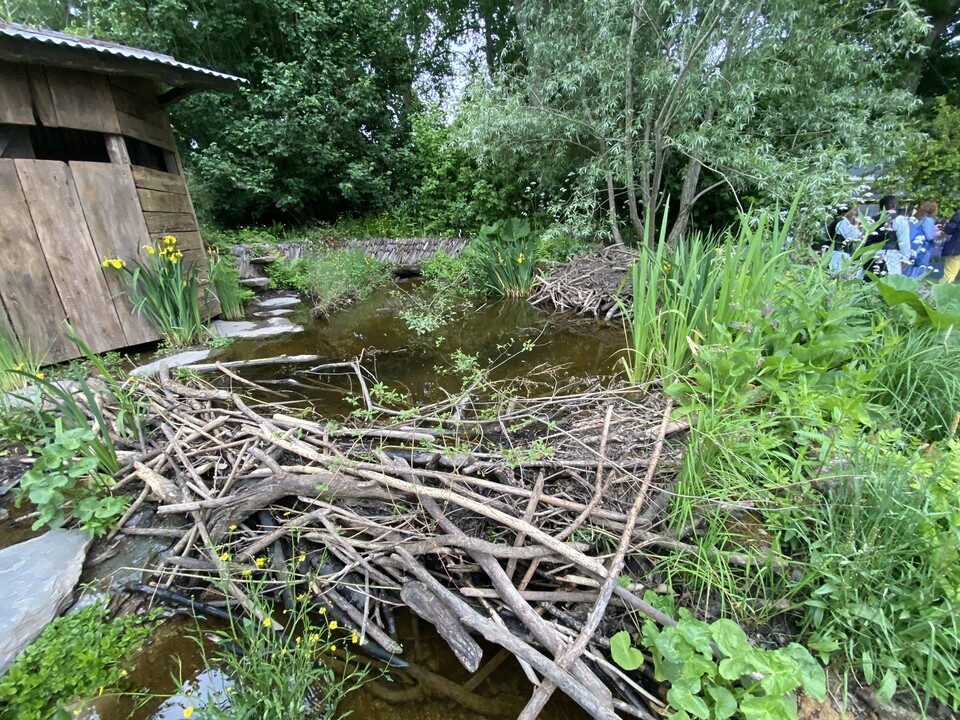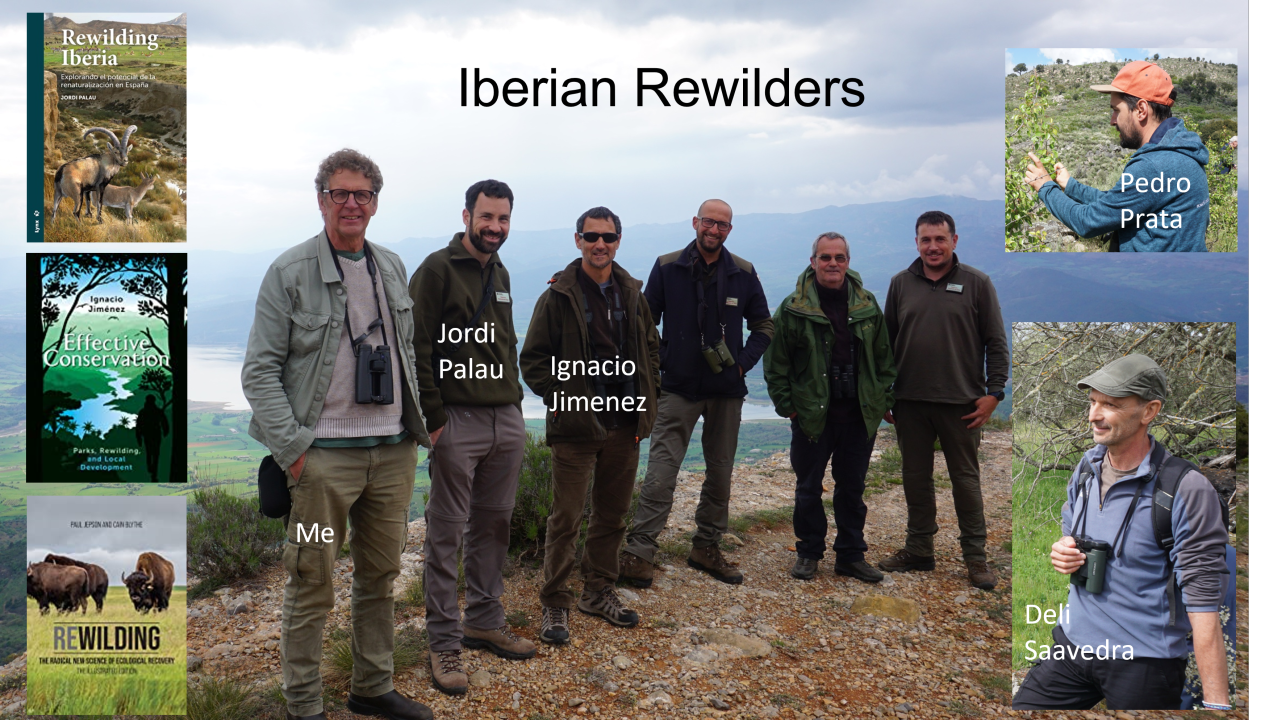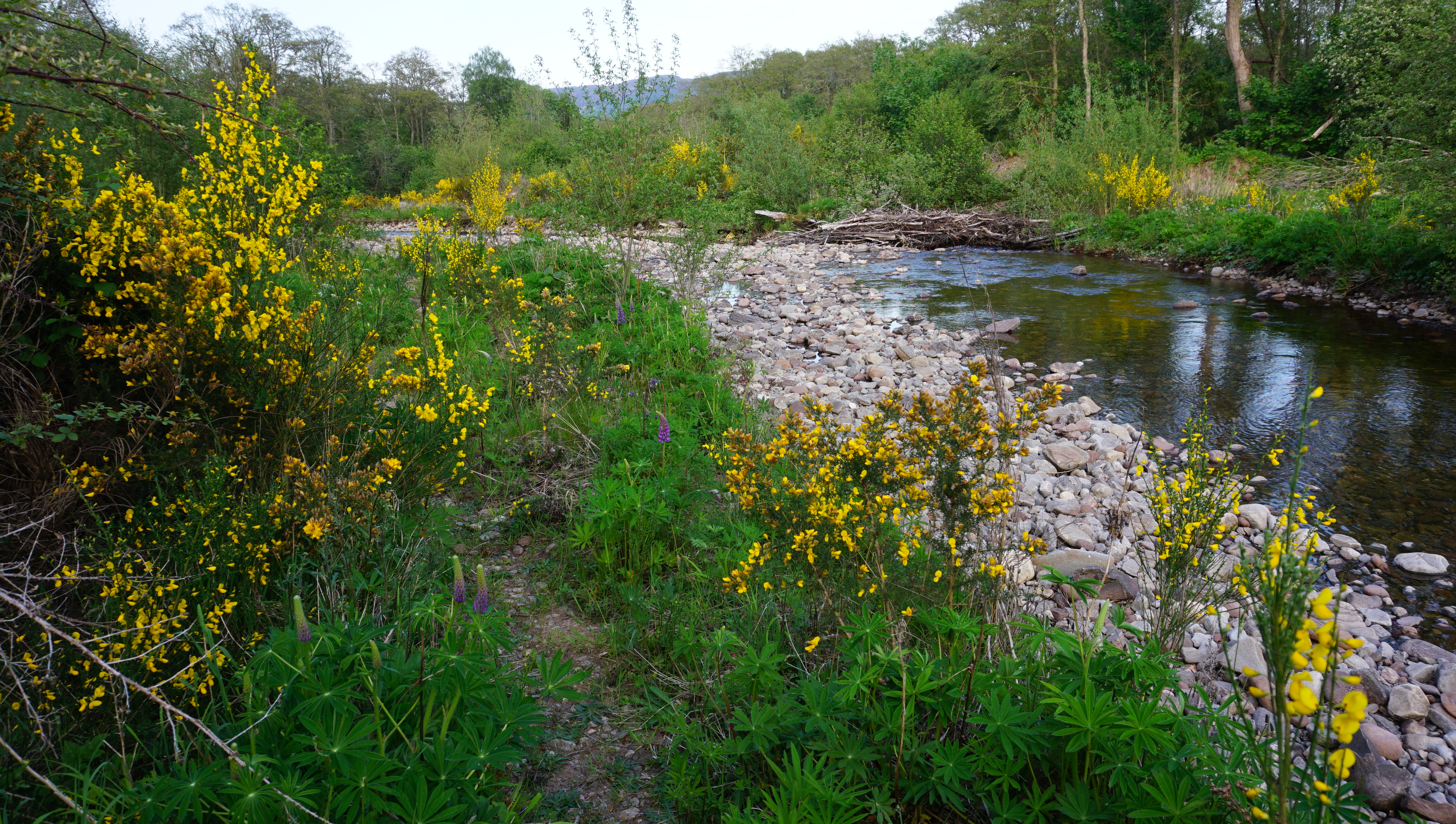In December 1978 the famous Brazilian ornithologist Helmut Sick made one of the ornithological discoveries of the 20th century. He located a breeding population of the fabulous Lear’s macaw – a species that had been known in collections for 150 years but whose whereabouts in the wild was a mystery.
Lear’s macaw is one of four blue macaws and a smaller and slightly darker version of the better-known Hyacinth macaw. Forty years ago conservationists feared this group of huge and impressive parrots was heading for extinction due to a combination of trapping for the pet trade and habitat loss. The situation looked desperate: the Glucose macaw was already extinct (last seem 1951), the localised Spix macaw was on the verge of extinction in the wild and thousands of Hyacinth macaws were being trapped each year. A survey following the discovery estimated there were just 60 Lear’s macaws left in the wild: today there are well over one thousand.
In search of the Lear’s macaw Helmut Sick – or Sicki as he was known –made three expeditions into the vast, dry, hot and thorny caatinga biome of NE Brazil. A tip-off from a parrot trader promoted his 1978 adventure and he journeyed into the interior with a developing double hernia, ruined his Toyota land cruiser and continued on on a saddle-less horse holding his hernia in one hand and a weapon in the other!
In December we travelled to see the Lear’s macaw. Our journey involved an 8hr drive in an air-conditioned Chevrolet along a smooth new highway to the town of Canudos. Our biggest frustration was trying to get a 3G connection and then Google maps taking us on an unnecessarily long diversion. This was a trip to think about what conservation success means in our rapidly changing world.
At 4pm the following morning we were picked up from the Fundacio Biodiversitas lodge in a Toyota so ancient we joked it was Sicki’s original. For twenty minutes our guide drove it at pace along a sand track winding through parched thorn bush. As we sat waiting for the dawn and the first Lear’s flew screeching and silhouetted overhead, he told us that it was his father who had guided Sicki to his macaw discovery.
The dawn revealed a truly spectacular bird inhabiting and equally spectacular landform of canyons and sandstone cliffs. We were blown away and wandered the cliff tops watching macaws congregate before flying out to feed, and pairs flying noisily around the canyons below us – their colour and form at its most exquisite against the brick red of the sandstone cliffs.
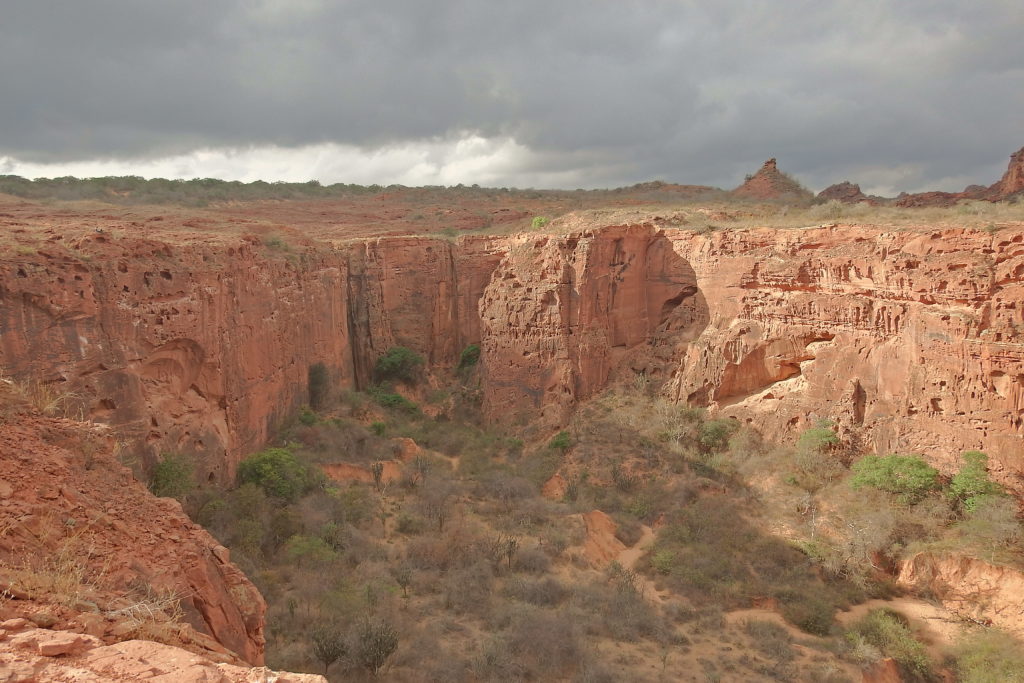
Photo: Paul Jepson
Lear’s macaw pair for life and many are together for several years before breeding. They lay three eggs but it is rare that all three chicks survive. These two characteristics indicate a bird evolved for a harsh environment with occasional years of plenty.
After a couple of hours our guide led us to a narrower part of the canyon where the macaws breed in holes that pit the canyon walls. As we sat watching pairs waddle in and out of their nest holes and tried in vain to get an in-focus flight shot, our guide explained the trapper’s technique. A rope would be strung along the canyon walls between two metal rings 15 meters apart. From this they hung an 8 metre bird net and, like a curtain, pulled it across the holes once the macaws had entered to sleep. When the macaws flew out of their holes in the morning they became tangled in the net and were hauled up.
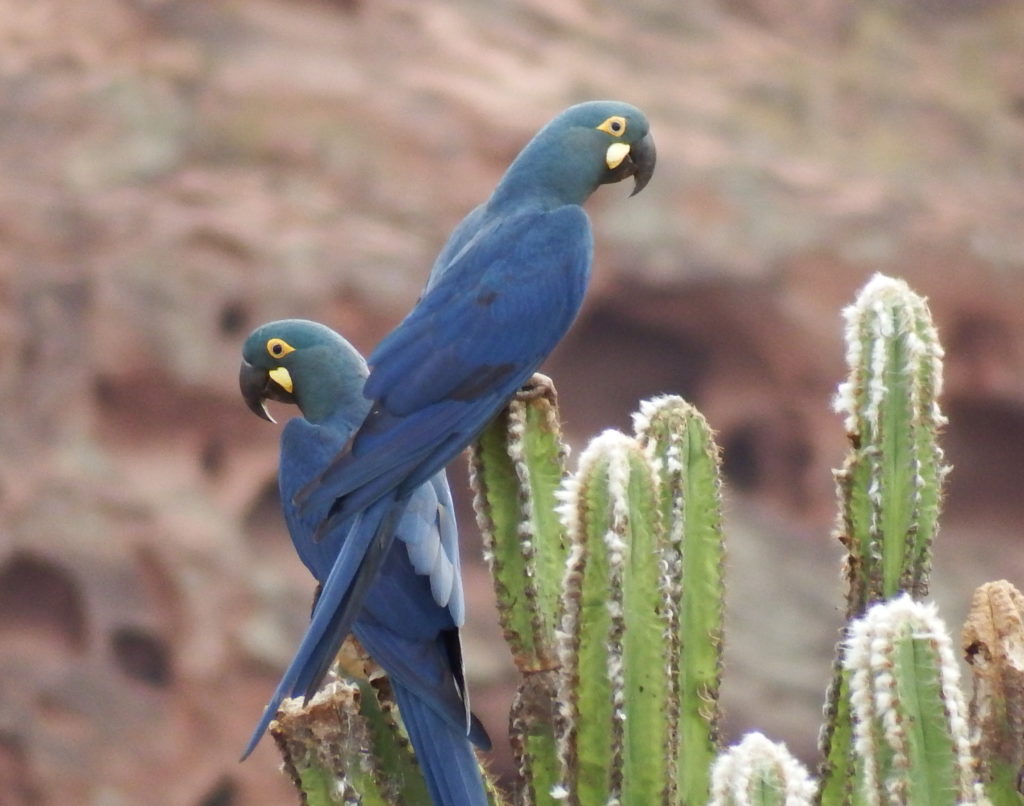
Photo: Paul Jepson
Comming to the macaw’s rescue
The most recent (2014) census estimated a population of 1200 macaw and in 2009 the species was down-listed from ‘critically endangered’ to ‘endangered’. This remarkable turnaround was achieved by a partnership between aviculturists, conservation biologists and the Brazilian authorities that successfully eliminated trapping. An American parrot lover and philanthropist bought the canyons and set up a local foundation to conserve the site in the long run. The Wildlife Conservation Society infiltrated the trade networks and the Brazilian authorities employed two local farmers as guards and took a hard line with trappers and in their dealings with wealthy parrot owners in SE Brazil. Later they established a Lear’s Macaw conservation programme in a second breeding and roosting area adjacent to the Raso da Catarina Ecological Station.
Judith Hart, the American parrot lover, also financed the first biological studies of the macaw population. This research raised fears that the population was short of its main food: the nut of the licuri palm. Studies showed that palms were not regenerating – in the macaw’s feeding areas the majority were 30 years or more old and producing few nuts. The problem was fire used to clear caatinga and cattle and goat grazing that followed.
In response the World Parrot Trust initiated a “palm for a parrot’ appeal and Charles Munn from the Wildlife Conservation Society located ranchers who were willing to allow the creation of palm plantations on their land. By chance, in our party was the person who, as a young volunteer, had cultivated the palm seedlings in in his nursery 700km to the south. Nineteen years later Danilo Limo had returned to check on the palms and show his son the macaws. With some frustration he showed us photos of palms he’d cultivated that were dead or dying due to goat grazing. The fence protecting them had fallen into disrepair – in his view just two years before the palms would have outgrown the reach of hungry goats. This was a case of great conservation intentions not seen through because people and finance move on.
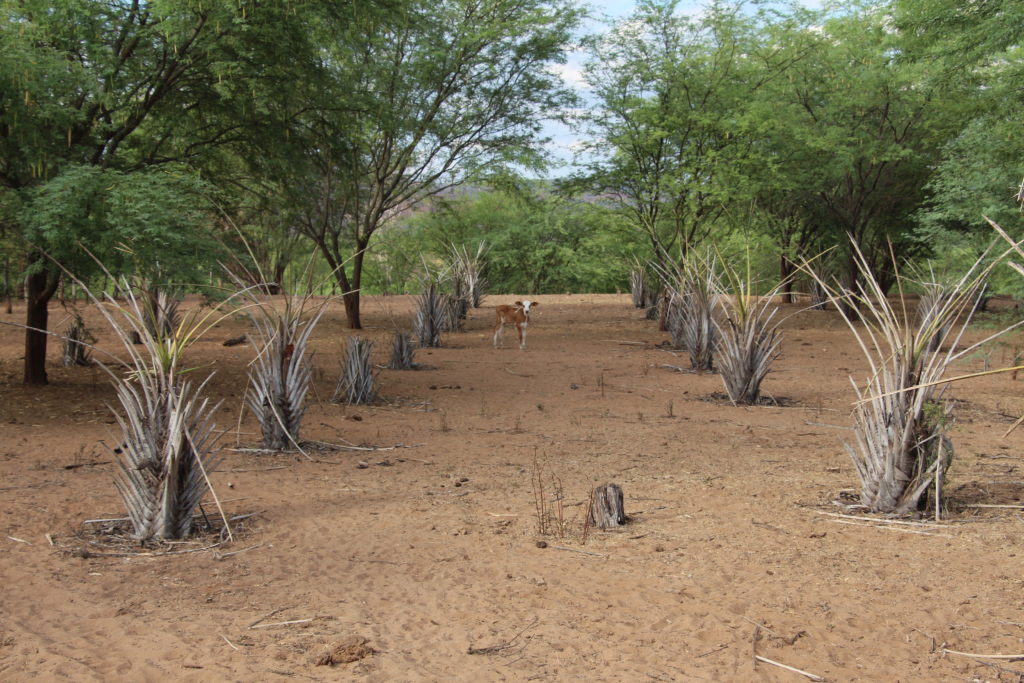
Licuri palms damaged by goat grazing. Photo Danilo Lima
A story of success but what of the future?
Back at the lodge we perused the visitor book whilst tucking into a superb breakfast. The lodge opened in 2009 and the book contained just 938 names of which 192 were from 2016. Having just enjoyed a world-class wildlife experience and nature photographers dream we wondered how it could be that the Lear’s spectacle attracted so few visitors.
We found an answer in a 1995 article by Munn. Charles Munn is an entrepreneurial conservation biologist who in 1994 had made famous the scarlet macaw clay licks in Peru’s Manus reserve in a National Geographic cover story. He was a macaw populariser who had clearly fancied the idea of applying tree-climbing skills learnt in Peru to the study of cliff nesting Lear macaws. However, Hart refused him permission to conduct research on her foundation’s land on the basis that the breeding population was too small to risk any form of disturbance. She may also have feared the publicity that Munn’s involvement would generate. Her view was that ‘secrecy is the best protector of an endangered species’. In scientific meetings of the time maps were withheld and misleading information circulated on location of the surviving Lear population. Munn moved on, no one was encouraged to visit and the macaw population recovered.
Looking back the Lear’s macaw is clearly a great conservation success story but will it remain so forty years hence? In an era of accelerating social, technological and environmental change restoring the population of an endangered species is a case of transiting the population into another world.
In the early 1980s, Canudos was a desperately poor bush town and a conservation approach involving a mix of secrecy and strict enforcement was right for the times. Today, Canudos in on the up: it is served by a new highway and has a smart town square with wifi- equipped cafes. The nearby Cocorobó Dam supports a modest area of irrigated farming but the region and the Lear’s macaw needs an alternative to the subsistence farming which damages the environment and contributes little to the economy.
The Lear’s macaw population now has the size and resilience where it can be viewed as an asset for regional development. Nature photography is taking off as an aspirational middle class pass-time and the Lear’s macaw canyons are eminently marketable. Added to this Canudos is famous as the site of the deadliest civil war in Brazilian history, where the mystic spiritual preacher Antônio Conselheiro and his 30,000 follows were massacred in 1897.
The combination of a major natural and a historical asset together with the arrival of modern road and communication infrastructure suggests that Canudos could be an exciting prospect for tourism investors. A conservation investment approach where struggling farms in favoured macaw feeding areas are acquired and converted to eco-lodges and ecological restoration areas could be the way to turn a conservation success into a conservation change story.
This research was funded by a Brazilian National Council for Scientific and Technological Development CNPq-PVE Grant (No: 400325/2014-4) and CNPq- Universal grant (No: 448966/2014-0).
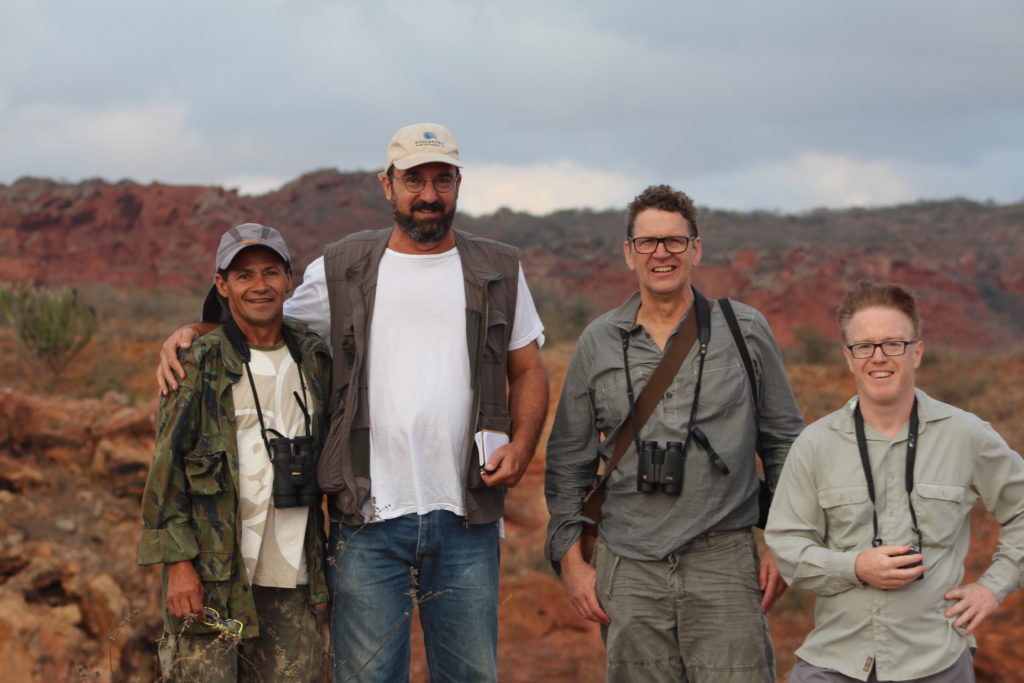
Our guide, Danilo Limo, Paul Jepson and Richard Ladle

